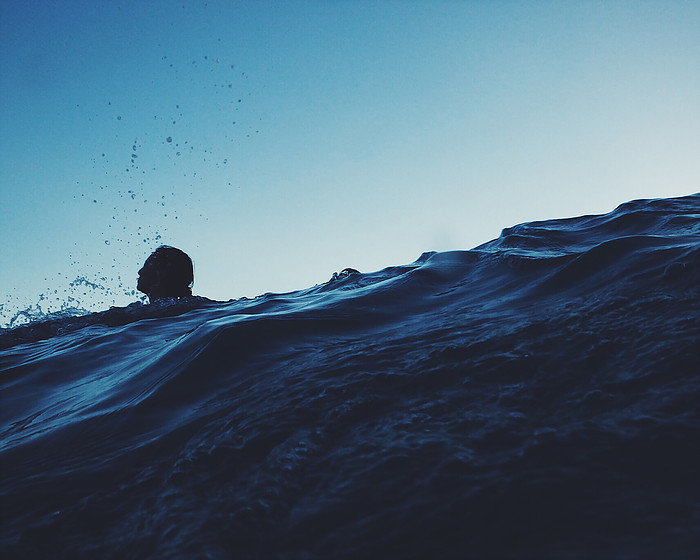Photo Credit: Li Yang
Man overboard (MOB) sends a shiver down the spine of every mariner – it is one of the worst things that can happen at sea and every professional or leisure mariner is trained on what to do. The man overboard drills I’ve learnt as a RYA sailing skipper, a Royal Navy Officer and PADI Rescue Diver are pretty much the same – alert the boat/ship skipper, take the position, appoint a lookout to mark where the person is (this is crucial) and deploy a flotation device. The Captain then takes over and instigates the rescue. So when 46-year-old Kay Longstaff hit the headlines at the weekend after being found alive in the Adriatic waters off Croatia, it naturally caught my attention.
Although details of exactly what happened to Ms Longstaff are still sketchy and speculative, it appears it was some hours before she was reported missing onboard the Norwegian Star cruise liner, so normal MOB drills couldn’t apply. It was thanks to the ships CCTV footage that they had confirmation she went overboard, the time she went and the position of the ship. This enabled the Captain to instigate the rescue. My congratulations to him and his ships company (crew). Confirming these known facts and alerting the Croatian authorities led to the swift and safe rescue of Ms Longstaff. More congratulations to the Croatian Coast Guard. This was the very best outcome.
Once safely on shore, Ms Longstaff’s rescue has made headline news across the world and her simple dockside soundbite has been broadcast everywhere, thanks to some well tipped Croatian journalists:
https://www.bbc.co.uk/news/uk-45240390
Incidents involving human survival, adversity and endurance attract immense interest – the Thai boys football team trapped in a flooded cave in Northern Thailand earlier this year is a good example. When there is a successful outcome, it reinforces the stellar reputation of those involved in securing it. In the case of Ms Longstaff however, it is not the end of the public interest. There remains the big question of how she ended up in the water and how this could happen on a modern purpose-built cruising ship.
Yes, this was an isolated incident with its own set of circumstances surrounding Ms Longstaff, yet Norwegian Cruise Lines experienced another MOB incident in the Caribbean just last month. It was another case of a miracle survival. Now however, Norwegian Cruise lines has a reputation issue they are managing, with two MOB incidents in as many months (and fourth this year). Add to this Ms Longstaff ‘s dockside statement that she fell, yet speculation from the ship is emerging that she jumped. Finally, there is interest on social media how Norwegian Cruise Lines are managing the passengers delayed as a result of the search for Ms Longstaff. A significant number disembarking had missed their onward travel arrangements.
A further consequence of this incident is that it has thrown the spotlight on the cruise industry. The cruising industry is big business with around 28 million passengers globally expected to take a cruise in 2018*. The cruise industry's global economic impact in 2016 was estimated to be $126bn*. MOB incidents in the cruise industry is surprisingly quite common - according to the website Cruise Junkie, there have been 17** MOB incidents this year alone. Maintaining consumer confidence post incident will be critical to Norwegian Cruise Lines and the industry as a whole in the coming weeks. Many will be asking questions around areas of risk on a cruise ship, for example the balconies, safeguarding measures for individuals that may need support, frequency of MOB drills, as in both these cases they were not reported missing for some hours.
This incident has also given a huge and unexpected boost to the current Royal National Lifeboat Institute (RNLI) ‘Respect the Water’ national drowning prevention campaign. This has been referenced in a number of the UK press reports of Ms Longstaff’s survival:
This incident has demonstrated that when a major crisis happens, even when the alert is late, with clear procedures and well-trained employees they can have a successful outcome. The July man overboard rescue was thanks to an eagle-eyed crew member on another cruise ship 22 hours after the incident. It is the same for managing issues within an organisation facing reputational risk, as we are seeing in this case. In a well thought out crisis management plan, issues are identified and a clear plan of how to manage these issues is set out – particularly with consequential issues that will invariably arise with incidents attracting intense interest. As with the MOB drills, these plans need to be regularly exercised to validate the contents and ensure employees fully understand what they need to do.
I am naturally fascinated by anything to do with the sea and have a special interest in crisis and reputation. As this story unfolds, I will be watching with particular interest – Norwegian Cruise Lines and the industry have many elements to consider.
References and further reading:
*Statistics quoted from the Cruise Lines International Association 2018 Cruise Industry Outlook
** Statistics quoted from Cruise Junkie

